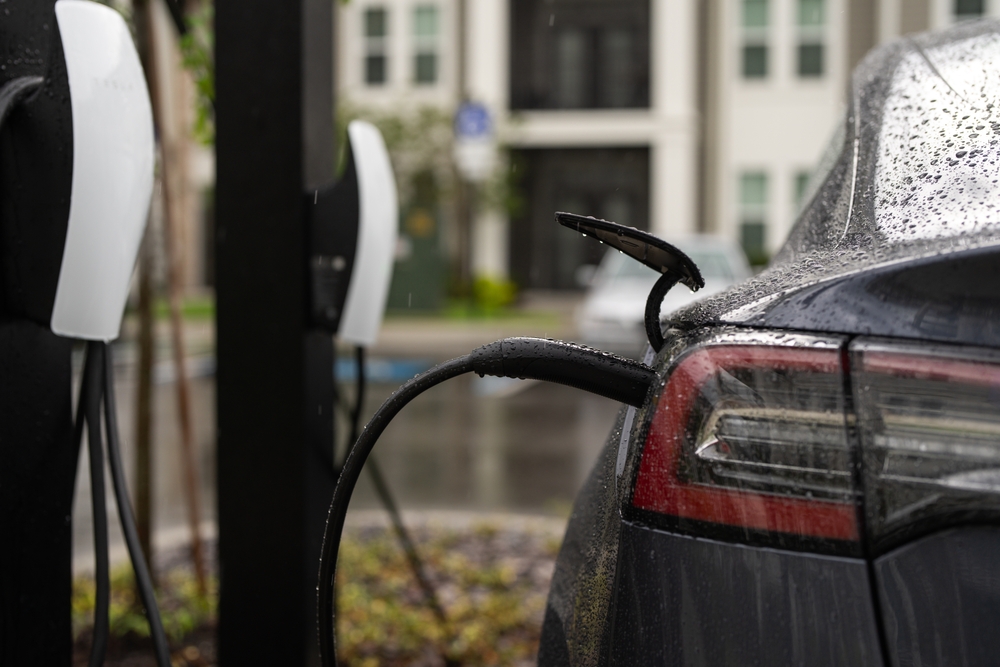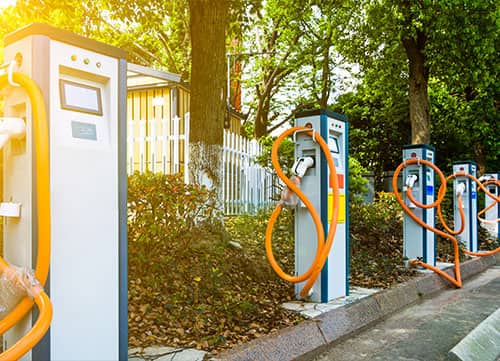Changes to plug-In grants
By SG Fleet | 29 March 2021

On 18th March 2021, the UK government announced changes to its electric vehicle (EV) plug-in grants – and they’re liable to impact any businesses following The Road to Zero.
But before we delve into it, we need to explain…
What are plug-in grants?
Plug-in grants were introduced in 2011 to encourage people to drive greener vehicles that run on electricity rather than fossil fuels.
At the time, these electric vehicle grants were a much-needed incentive for an expensive and niche technology. However, by the time the government announced a £403 million investment into plug-in grants in March 2020, EV technology has become much more commonplace, and an electric car, truck or van is now seen as a viable alternative to petrol and diesel-powered vehicles.
How do plug-in grants work?
The government has seven categories that all vehicles are sorted into depending on how much carbon dioxide (CO2) they give off and how far they can travel without giving off fuel emissions.
Pure EVs (e.g. not hybrids) are in category one. Anyone buying a new EV within that category is eligible for the electric car funding grant that knocks off a large percentage of the vehicle’s manufacturer RRP. The amount that saving covers depends on the kind of vehicle being purchased.
How do electric vehicle plug-in grants impact EV leasing?

Whoever buys an electric car can claim an electric plug-in grant. In the case of leasing, the company that buys the car, van or truck pays less for the vehicle. That saving is then transferred to the customer across the lifetime of their lease agreement.
So, if the customer takes out a three-year lease, their monthly payments will be reduced in line with the savings given by the EV plug-in grant.
What changes has the government made to electric plug-in grants?
The headline messaging here is that electric plug-in grants have been made to target more affordable vehicles while tightening CO2 eligibility restrictions on larger vehicles like vans and trucks.
For instance, over the last year, drivers or leasing companies could buy an electric car worth up to £50,000, and the government would pay 35% of its value up to £3,000. That has now been lowered to a vehicle worth £35,000 and 35% up to £2,500.
There are similar downgrades for plug-in truck grants and plug-in van grants, alongside far stricter regulations on how far those electric vehicles can travel before giving off fumes.
The net result is that, even in a period where the government is encouraging consumers and companies alike to drive green, there is now less incentive to do so, and the incentivised options available are slimmer.
The list of changes is complex, but you’ll find a simplified list below with the core information you need to know.
Cars
Max grant: now £2,500 (was £3,000)
Purchase price %: 35% (unchanged)
Eligibility: Maximum car cost is reduced to £35,000 (from £50,000).
Smaller vans (under 2.5t GVW)
Max grant: now £3,000 (down from £8,000)
Purchase price %: up to 35% (from 20%)
Eligibility: CO2 emissions now under 50g/km. Van can travel at least 96km with no emissions (was 75g/km and 16km).
Larger vans (2.5 tonnes to 3.5 tonnes GVW)
Max grant: £6,000 (down from £8,000)
Purchase price %: 35% (up from 20%)
Eligibility: CO2 emissions now under 50g/km. Van can travel at least 96km with no emissions (was 75g/km and 16km).
Trucks up to 12.5 tonnes
Max grant: £16,000 (down from £20,000)
Purchase price %: 20% (unchanged)
Eligibility: Trucks can travel at least 96km with no emissions (was 16km)
Other restrictions: Only available to the first 250 vehicles ordered in a financial year and limited to ten per customer.
Trucks over 12.5 tonnes
Max grant: Increased to £25,000 (up from £20,000)
Purchase price %: 20% (unchanged)
Eligibility: Trucks can travel at least 96km with no emissions (previously 16km)
Other restrictions: Only available to the first 100 vehicles ordered in a financial year and limited to five per customer.
Our perspective on the changes to plug-in grants

The government line from Transport Minister Rachel Maclean on the Gov.UK website is this:
“The increasing choice of new vehicles, growing demand from customers and rapidly rising number of charge points mean that, while the level of funding remains as high as ever, given soaring demand, we are refocusing our vehicle grants on the more affordable zero emission vehicles – where most consumers will be looking and where taxpayers’ money will make more of a difference.”
It is clear from this that the increased popularity of EVs means the EV plug-in grant is doing what it was designed to. However, it feels like these changes risk losing that momentum and could even be a backwards step. The EV percentage of new cars sold went up from 3% in 2019 to 11% in 2020, so it will be interesting to see where that figure lies at the end of 2021. If growth slows significantly, we’d hope to see adjustments made to further boost the appeal of electric vehicles.
Reasons to be optimistic
Nonetheless, there are reasons to be optimistic. The changes to EV taxation announced in the recent Budget are encouraging, with road tax for EVs staying at 0% for another year.
That’s in addition to a road tax freeze on all HGVs (including electric ones) for 2021-22, along with a suspension of the levy for all HGVs for a further 12 months. All of which gives fleet owners some leeway when it comes to costings in the immediate future.
Looking to go electric? We can help
We understand that the recent changes to electric plug-in grants may cause some confusion, and could be making you think twice about going green with your fleet. That’s why we’re here to clear things up and talk you through your options.
If you’re looking to know more about how plug-in grants affect your fleet business, call us on 0344 854 5100 or email Chris Salmon at CSalmon@sgfleet.com.


.png)


.png)
.png)
.png)